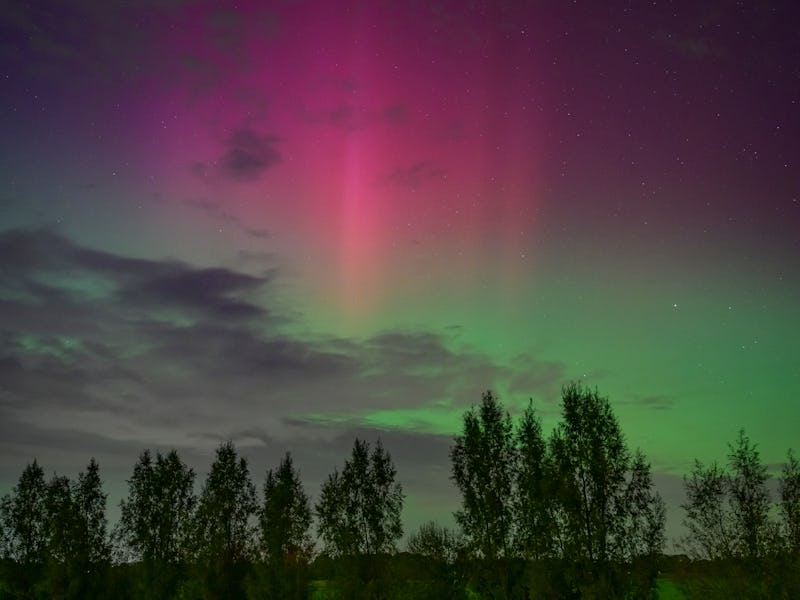A Coronal Mass Ejection Just Slammed Into Earth’s Magnetosphere — Here’s Where You’ll See the Auroras
Here we go again!

Today’s aurora alert proves the Sun is more dynamic than many may realize.
The National Oceanic and Atmospheric Administration’s Space Weather Prediction Center announced today that the Sun had successfully triggered categorically “severe” conditions in our upper atmosphere. As a result, auroras may be visible as far south as Alabama and northern California.
The Sun is predictably chaotic. Every 11 years, it reaches solar maximum. This peak in activity produces flares and coronal mass ejections, where charged particles ride along the Sun’s ever-flowing solar wind out into the Solar System — and sometimes strike Earth. Today, just before noon Eastern time, the ejection reached our planet.
The Milky Way shines next to an aurora borealis, which makes a rare appearance in California’s Eastern Sierra mountains on October 8, 2024.
More specifically, it slammed into our planet’s magnetosphere. This teardrop-shaped cocoon gets activated when it receives solar strikes. The energy travels towards the magnetosphere’s pointed end, comes back, and, if it creates a local surge known as a substorm, an aurora appears.
“The aurora may become visible over much of the northern half of the country,” Space Weather Prediction Center officials added.
They may appear different depending on where a spectator is located. Diffuse auroras, which look like a colorful fog, and less like the iconic curtain displays, are more likely the farther away from the north or south pole that someone is situated. “The charged particles are spread out over a large region when they enter the atmosphere, so the aurora is ‘diffused’ and hazy in appearance,” according to NASA.
The farther one gets from the equator, the chances increase for seeing aurora ribbons.
October 2024 has been a busy month for the Sun. Last week, the star expelled several solar flares of X-class, the highest categorical rating. On Tuesday and Wednesday, the Sun again unleashed two X-class flares.
Spacecraft such as NASA’s Solar Dynamics Observatory have been releasing spectacular images of these bursts as they appear. Space Weather Prediction Center releases ongoing updates of geomagnetic storms, and will continue to heavily monitor the Sun’s activity as the star approaches solar maximum anticipated for July 2025.